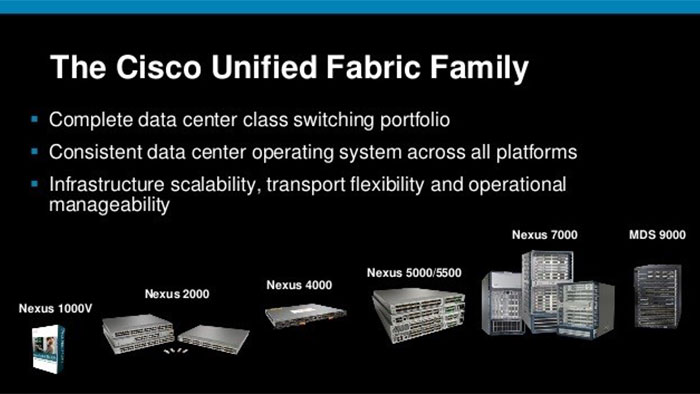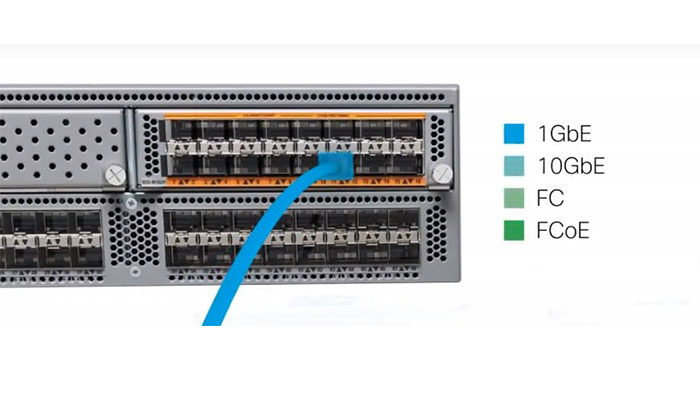
Today’s data centers are faced with siloed resources and facilities, Limited scalability, poor resource utilization, growing complexity. To address these challenges, The Cisco Unified Fabric provides an architectural approach for general purpose, virtualized and cloud data center deployments.
The Cisco Unified Fabric links all resources and services within and across data centers so resources are highly available wherever and whenever they are needed. An evolutionary NX-OS based Nexus product portfolio delivers a single end-to-end operating system extending open standards-based innovations from hypervisor to the data center core providing a seamless intelligent and scalable network foundation.
Typically, data centers maintain distributed networks from LAN and SAN resulting in more adapters, cables, switches and complexity. Cisco Unified Fabric FCoE merges LAN and SAN networks in to a single high reliable Ethernet network using a wire once, connect anything approach that simplifying and increasing agility.
To simplify migration to converged network, Cisco’s switches offer unified ports that are software configurable to support Ethernet, Fiber Channel, or FCoE connectivity.
For scaling and simplifying the network, to address today’s dynamic data centers, the Cisco Unified Fabric integrates high performance Nexus switches with several industry leading innovations. The Cisco fabric extender architecture, based on the 802.1BR standard, provides scalability in both network and server levels. Fabric Extenders deliver top-of-rack switch port scalability.
Moreover, Cisco Adapter FEX enables server adapter consolidation by partitioning a single adapter into multiple virtual NICs. Also, VM-FEX extends network to each virtual machine that significantly increasing VM performance and security. All three FEX architecture technologies are configured and managed from the access switch for simplified control and management.
To scale and simplify the network core, Cisco FabricPath delivers a highly scalable and reliable layer 2 multi-path Ethernet network providing high bandwidth applications and seamless workload mobility.

For scaling across data centers, Cisco Overlay Transport Virtualization (Cisco OTV) extends layer 2 boundaries across multiple locations while maintaining layer 2 adjacencies providing robust workload mobility and distributed clustering between geographically distributed data centers. Cisco Locator/Id Separation Protocol (Cisco LISP) delivers IP portability eliminating the location dependencies for traditional IP addresses.
LISP enables VMs to be moved seamlessly across data centers or cloud while maintaining the same IP address significantly reducing user disruption while simplifying IT operations. Along with convergence and scale, the Cisco unified fabric delivers layer 4 to layer 7 network services and integrated NX-OS intelligence.
The Cisco Nexus 1000v series of virtual switches provides consistent policy based VM connectivity and security hat migrates with the VM. Cisco unified fabric also delivers storage intelligence through services-oriented SAN solutions which extends any network service to any device regardless of protocol, speed, vendor or location. Storage media encryption provides fabric based multi-vendor encryption for securing data adverse across all storage media.
Data mobility manager enables you to migrate in-use data across multi-vendor devices and over any distance while maximizing the application availability. I/O Accelerator speeds up replication and backup over Metro and WAN. To simplify the operations, the Cisco Data Center Network Manager provides end-to-end provisioning, control and monitoring from the virtual machines to the fabric core in a single management solution.